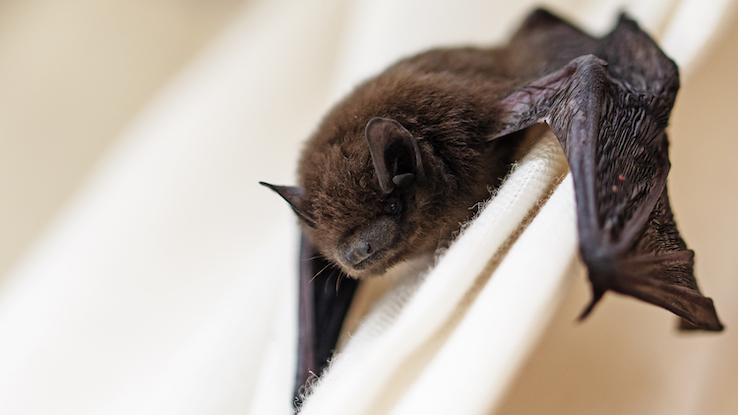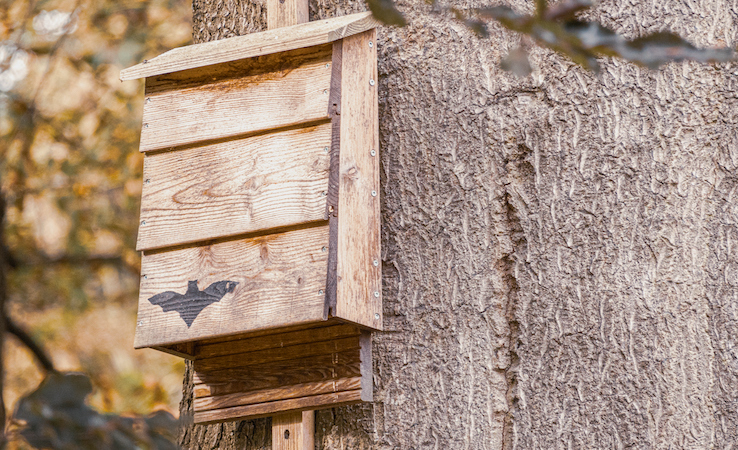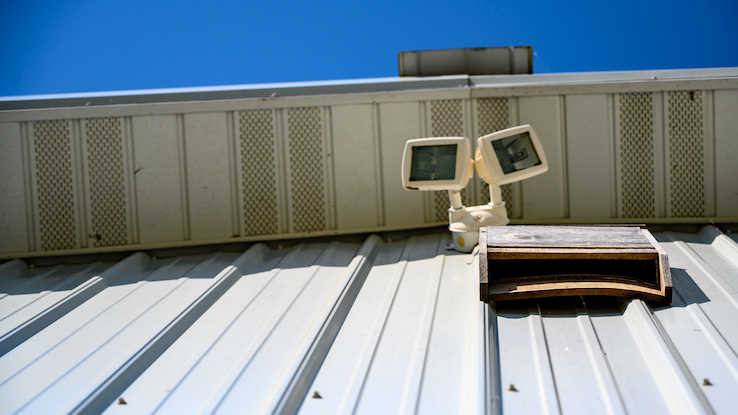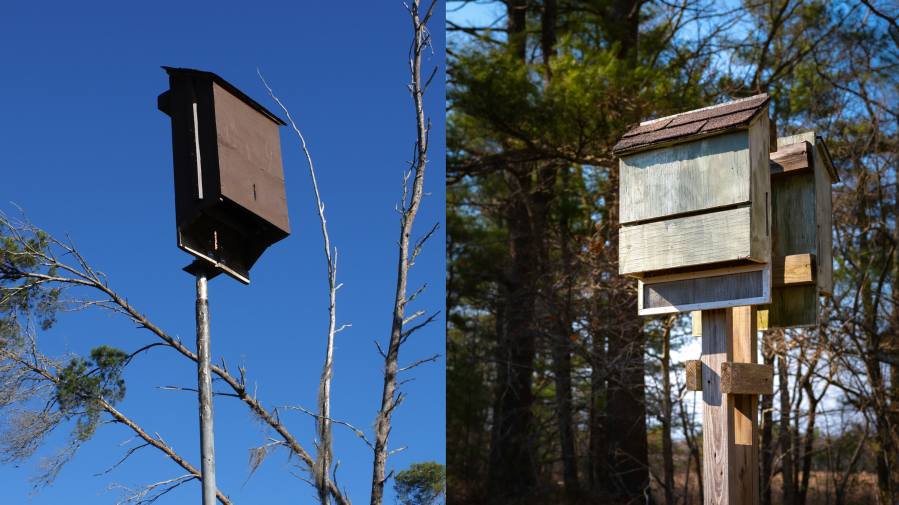The Best Places to Hang a Bat House — and Why You Should This Year

We may not see bats on a daily basis, but they’re important parts of our local ecosystems. Bats help to control bug populations, prey on mosquitoes, disperse seeds and pollinate our favorite fruits.
Unfortunately, upwards of 15 bat species are threatened or endangered due to habitat loss and infections that human cave explorers have spread. But, there are key ways to help some of these populations begin to rebuild themselves. You can play a role in protecting bat species by hanging bat houses where you live.
To get started, learn more about the benefits of bats, how bat houses are helpful, and how to build and hang one of your own.
Why Should You Hang a Bat House?

One key task bats perform is pest control. That’s especially important during summer’s heat and humidity, when more bugs are out at night. Bats might not look like vicious predators, but they consume more night-flying bugs than any other predatory species. They’re considered “insectivores” due to their bug-centric diets.
Bats can help keep mosquitoes and other pest populations from skyrocketing and interfering with your enjoyment of the outdoors — not to mention spreading diseases. According to researchers, bats can consume thousands of bugs an hour. Many bats can eat up to 12,000 bugs in a single night, if not more.
Nectar-eating bats that live in warmer climates also play a significant role as pollinators. This involves tropical climates, which are where most of our planet’s fruit supply is sourced.
As bats eat and move between different trees, plants and flowers, they collect pollen on their fur. They transfer this pollen to every other plant they come into contact with. They also shed pollen while they fly, which helps to naturally pollinate the plants we depend on. In fact, 300 types of fruit rely on the pollination bats provide, including bananas, mangoes and agave.
Bat populations are under threat due to habitat loss, climate change and illness. But, building a bat house can be a great way to help support bats from the comfort of your yard.
What Should Your Bat House Look Like?

You might be able to pick up a premade bat house from your local hardware or garden store, but you can also construct your own. You can find printable bat house plans online to assist you. Bat Conservation International has a guidebook with multiple plans to help you with the construction process. The Nature Conservancy also has a step-by-step blueprint for bat houses.
When constructing a bat house, you’ll want to create a structure that resembles their natural environment as much as possible. Aim for the bat box to mimic their ideal roosting area, specifically the thin spaces between peeling tree bark and tree trunks.
As far as dimensions go, your bat house should be at least 2 feet tall and 14 inches wide. A good bat house should include multiple chambers for the bats to roost in, with sturdy ledges where they can hang upside down.
Make sure you build your bat house using durable, weather-resistant materials, such as wood. Bats are susceptible to changing weather conditions and need a dry, warm place to roost.
You’ll need an inch-wide opening at the bottom of the house so the bats can enter and exit. This small opening prevents predators from getting in. There should also be a gap on the body of the bat house to allow for proper ventilation.
If you want, you can paint the outside to blend in with the environment. However, try to keep paint and chemicals out of the inner chambers — you don’t want bats ingesting any toxic materials.
Lastly, make sure your bat box includes a roof to guard against predators. Seal the wood to keep rain, snow and moisture out.
Where Should You Hang Your Bat House?

The location of a bat house is just as important as its construction. The best place to hang a bat house is either on the side of your home or on a tall pole. This helps bats easily locate the house. Also, make sure your bat house is highly elevated — at least 12 to 20 feet above the ground or greenery below.
You’ll want to hang your bat house where it’ll get plenty of sunlight — at least six hours daily — to keep the interior warm. Because bats are naturally attracted to water, finding a location near a river or lake can attract more bats. This is also good for the bats and their offspring, as they won’t have to fly too far to hydrate.
When hanging your bat house, avoid placing it in a tree. Installing a bat box in a tree makes bats more vulnerable to predators, such as bears, which can climb the tree and knock the box down. It also makes it more difficult for the bats to fly out; they may hurt themselves running into branches trying to enter or exit the house.
Additionally, trees may obscure a bat’s ability to locate a bat box. Bat houses are most successful when you mount them somewhere within a clearing or with an open space below. This way, the bats can easily drop out and fly away without injury or confusion.
Tips and Tricks for Installing Bat Houses

Installing a bat house high enough off the ground may be the biggest challenge of this project. But, a few tips can make the process easier.
If you plan on installing your bat house on the side of your home, your garage or another building, you can mount the bat house on metal rails. Screw the railings horizontally or vertically onto the structure of your choice. Then, use screws to attach the bat house to the railings. Be careful to avoid any screws poking out into the roosting pods.
Attaching a bat house to a wooden or metal post works best if the house has multiple roosting chambers. You’ll need to root your pole a few feet into the ground, so make sure wherever you dig is free of electrical wiring. To mount your bat house on the pole, construct a frame for the bat house, then screw the anchoring board of the frame into the pole.
Once you install your bat house, do some general maintenance on it at least a few times a year. Make sure there’s no damage, that it’s still protected against the elements, and that it’s not unstable from wind or improper hanging. Check for the possibility of other pests, too. There’s a chance that wasps or other bug populations may find the bat house appealing and try to move in. In this case, you may need to have an exterminator remove the wasps and try again with your build.
Ultimately, building and mounting a bat house is a simple way to protect the bat populations in your area. With as much as they do for our ecosystems, supporting bats with these boxes can be an easy yet effective step for conservation.





